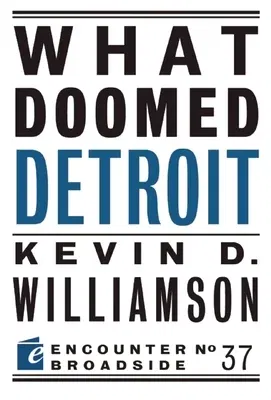Kevin D Williamson
(Author)What Doomed DetroitPaperback, 26 November 2013

Qty
1
Turbo
Ships in 2 - 3 days
In Stock
Free Delivery
Cash on Delivery
15 Days
Free Returns
Secure Checkout

Part of Series
Encounter Broadsides
Print Length
40 pages
Language
English
Publisher
Encounter Books
Date Published
26 Nov 2013
ISBN-10
1594037469
ISBN-13
9781594037467
Description
Product Details
Author:
Book Format:
Paperback
Country of Origin:
US
Date Published:
26 November 2013
Dimensions:
17.27 x
11.68 x
0.51 cm
ISBN-10:
1594037469
ISBN-13:
9781594037467
Language:
English
Pages:
40
Publisher:
Series:
Weight:
4.54 gm